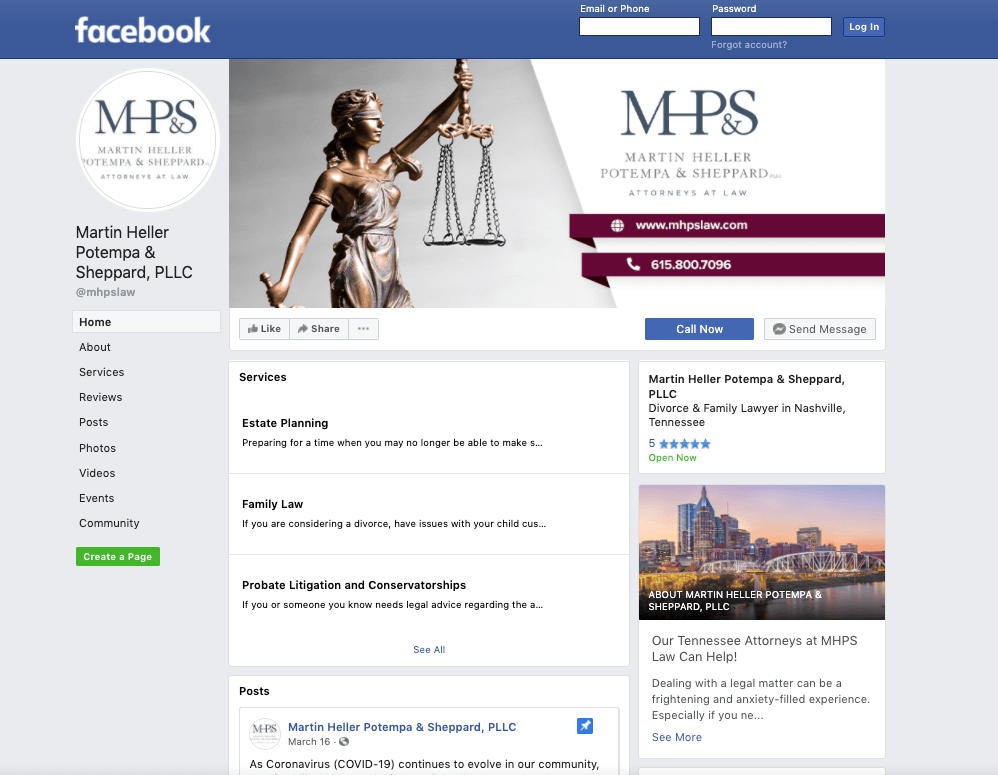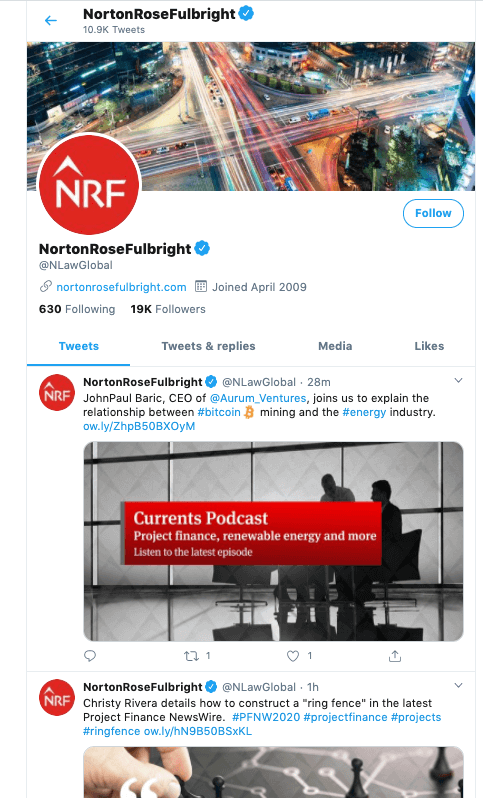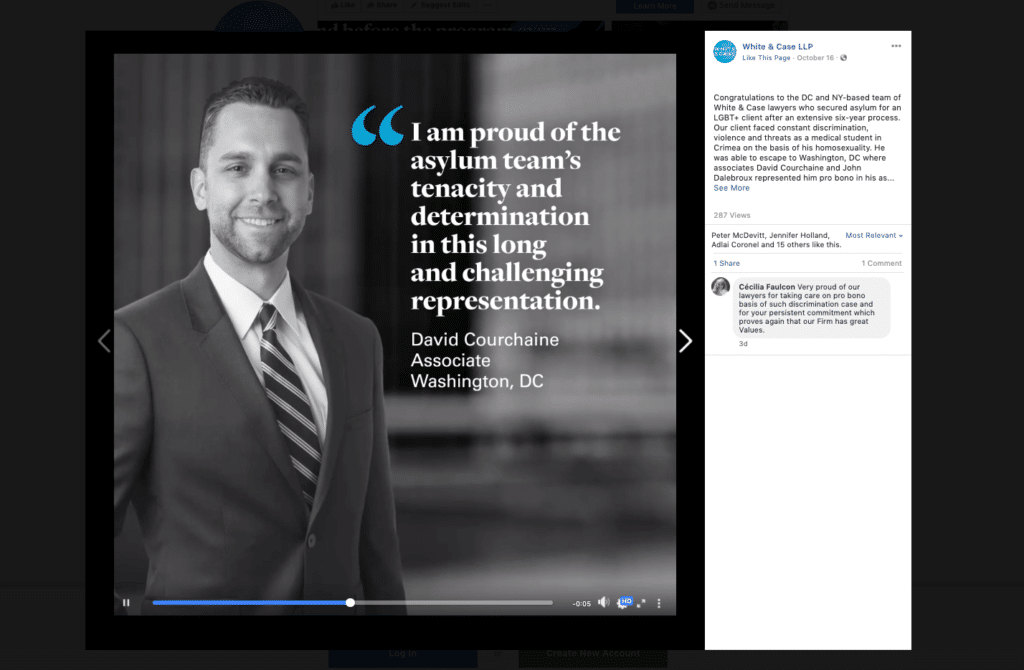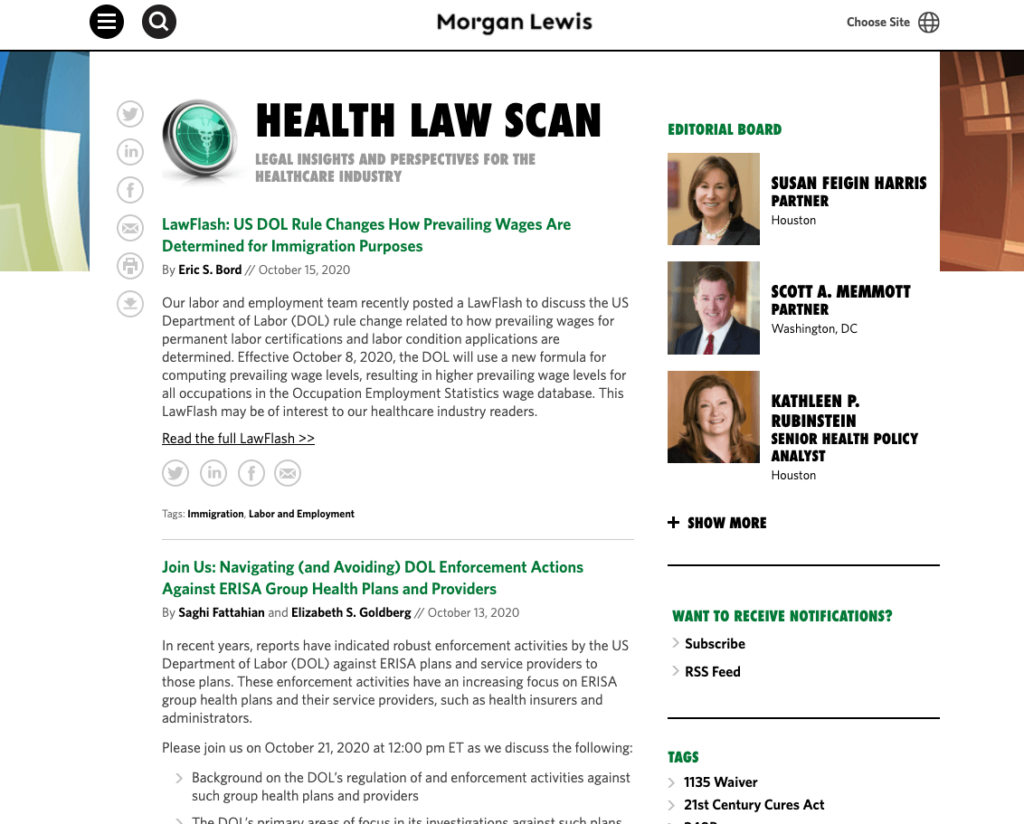Social media has long been an indispensable tool for promotion and customer engagement, especially for commercial businesses. But today, as much as 76% of law firms are also embracing the power of social media as a way to increase their firm’s exposure and build their client base, according to the American Bar Association.1
And yet, some attorneys remain hesitant about becoming active on social media. For some, the benefits of social media just aren’t all that clear, while others fear the reputational damage that could come about through a misconstrued post, a hostile interaction, or even an accidental breach of client confidentiality.
But, as we’ll see, lawyers can drastically mitigate the potential downsides of using social media by adhering to a few well-defined best practices. In this post, we’ll walk you through the benefits of social media for lawyers, break down what the different social platforms have to offer, and give you a list of tips to follow that will help set you on the road to social media success.
What we’ll cover:
- The benefits of social media for lawyers
- What the different social media platforms have to offer law firms
- 8 best practices to follow when implementing your social media strategy
So, let’s begin by taking a look at how social media can benefit you as a lawyer.
See how these four law firms adapted their operations to work from anywhere—while still providing a great client experience. Download the free case study playbook!
The benefits of social media for lawyers
It connects you with potential clients
A vast amount of society’s attention is funneled into social media, with the average person spending around 2 hours and 24 minutes on social media each day.2 And this attention isn’t just spent interacting with friends and watching cat videos—54% of consumers use social media to research a product or company before they make a purchase.3
This means that being active on social media can open you up to a huge new pool of potential clients. In fact, according to the American Bar Association, 35% of lawyers who use social media have been able to get new clients as a result.4
Social media is especially useful in getting the attention of younger prospects—69% of consumers aged 18 to 44 say they would be likely to hire an attorney who has an active social media presence.5
Of course, the trick to attracting the right kind of attention is to consistently offer your target audience valuable information that showcases your expertise. More on that later.
Opens up new networking opportunities
Another major benefit of building a social media presence is the opportunities it creates for connecting with other legal experts and organizations.
When you develop a reputation among your peers for offering high-quality content, you boost your brand awareness and increase your chances of getting more of those all-important referrals.
Keeps you up to date on the latest industry news
Social media isn’t just a source of leads and industry connections, it also keeps you abreast of the latest industry developments and opinions from other thought leaders in the field.
In this sense, social media can be used as an ongoing educational resource that supports your professional development.
Learn how to run a remote-friendly legal practice in this in-depth guide.
What the different social media platforms have to offer
Now that we’ve covered the major benefits of social media, let’s look at what the main platforms have to offer legal experts.
LinkedIn is the social media platform that’s most commonly used by legal professionals, with around 84% of lawyers being active on the platform.6 What’s more, 27% of lawyers consider LinkedIn to be the most effective platform for bringing in new clients.7
LinkedIn has been specifically designed to connect people from all industries to their wider professional network. The platform, therefore, lets you showcase your expertise and share insights to an audience that’s already primed for industry-related content (unlike other channels, in which people’s feeds are often a mixed bag of professional and casual content):

A standout benefit of the platform is that it lets you accumulate personal endorsements and detailed recommendations from your clients and peers, which can bolster your credibility in the eyes of any interested prospects.
For almost a third of lawyers, Facebook is the best social media channel for generating new clients.8
From a marketing point of view, one of the biggest benefits of Facebook is the sheer size of its user base. With more than 2.7 billion monthly active users, you’re virtually guaranteed to find people within your practice’s niche, no matter how narrow it is:

While many businesses use Facebook’s super-targeted ad platform to reach their ideal customers, free-to-use features like Facebook groups are a great way to connect with members of your target audience.
Unlike the other two platforms, Twitter is all about posting bite-sized insights and updates, which makes it especially useful for networking and quickly interacting with prospects while on the move.
Norton Rose Fulbright is a great example of how you can amass a large audience on Twitter, with over 19,000 followers:

As the originator of the hashtag, Twitter makes it easy to participate in widespread discussions, giving you the chance to draw the attention of a wider audience.
The more social media channels your firm is on, the more important it is to have a tool that minimizes the amount of time (and resources) spent on managing all these messages and profiles.
8 best practices to follow when implementing your social media strategy
As with all marketing channels, you’ll need to keep to a strategy to get the most out of social media. This doesn’t mean you need to stick to the same rigid plan no matter what—your strategy will evolve as you gain more experience—but it does mean you need to put in consistent effort for results to show. A haphazard approach simply won’t cut it.
👀 Find out how one law firm provides a 24/7 client experience—without being online 24/7.
The following tips are designed to help you develop a winning social media strategy:
1. Set your goals
There’s little use investing time and resources into building a social media presence if you’re not sure about what you want to get from it.
Your social media program should serve a specific purpose. In the beginning, this may be something as simple as learning more about the wants and needs of your target audience, growing a decent-sized follower base, and figuring out what type of content resonates best. Once you’ve built some momentum, you can begin to set more ambitious targets, like attracting X number of clients within the next 12 months.
Setting clear objectives first will inform the rest of your strategy and make sure that your social media efforts are focused and intentional.
2. Research your target audience and pick a platform
Before you decide which platform to prioritize (no, you don’t have to be on every single platform—that would leave you no time to serve your clients!), you should first do some research to find out where your target audience is most active and what type of content they engage with the most.
One way to do this is to identify a few popular thought leaders or firms within your niche and check to see which platforms and types of content appear to bring them the most engagement.
Another way to get a better sense of your target audience’s appetite is to search for topics and keywords related to your particular niche within each platform. Which accounts and what types of posts come up frequently in the results? What can you learn from them?
If you’re completely new to the social media game, we recommend that you pick just one platform to focus on to begin with. Once you’ve established yourself on that platform, you can then begin to branch out onto other platforms if you think it’s worth your while.
3. Make life easier with the right tools
Keeping on top of your social media program can take a lot of manual work to implement, regardless of how well you’ve planned out your strategy.
The good news is there’s a variety of tools available that can automate much of this work for you. And for legal practices in particular, newer technologies like social media platforms and video conferencing tools can really help differentiate their business and more importantly, drive more client and employee engagement—with minimal investment.
If we’re looking specifically at social media, there are many scheduling tools that can automatically publish pre-loaded content at specific times, while social listening tools give you the ability to track different channels for any mentions of your brand and related topics.
But with Facebook, Twitter, LinkedIn, Instagram, and more, how can a busy law firm manage all these accounts? It’s not a great use of time for an attorney (especially if you’re flying solo) to be toggling between three or four social media platforms and responding to conversations on each one as the messages come in.
That’s why having the right tool is crucial.
When it comes to managing replies to comments from across different platforms, a tool that pools together information from all your profiles can be a huge timesaver. RingCentral’s digital engagement platform does exactly this, consolidating all your social media conversations into one dashboard so you can reply to messages from LinkedIn, Facebook, Twitter—and even live chat and email—all from one place:
It’s an easy, low-cost, and relatively low-risk way to open your business to a stronger client experience that spans different channels.
🕹️ Get a hands-on look at how RingCentral works by booking a product tour:
4. Develop a content strategy
Now comes time to take this understanding of your target audience’s content preferences and use it as a foundation for your own content strategy.
Unsurprisingly, offering relevant and useful content is the key to getting followers—mere promotion of your firm isn’t enough. Your content should position you as an expert and at the same time be accessible enough to appeal to a non-expert audience. You can achieve this through a wide variety of content formats, from sharing useful legal tips and linking to helpful resources, to publishing a series of insightful interviews with your partners.
Here are some other formats worth considering:
Visuals and graphics
Posts with a strong visual component tend to stand out in people’s feeds and are a great way to convey dense information, facts, and statistics. Images are also effective for adding context to written posts, while photos of real people provide an additional human touch to your messaging.
Videos
Video lets you package information in an engaging and easy-to-digest format and gives you the opportunity to convey more of your firm’s personality. You can use this format to conduct interviews, discuss recent news, and explain relevant legal concepts. Here’s an example of White & Case LLP using a video on Facebook to share that they won a big case:

Blog posts
Many law firms use social media to promote their blog content so they can drive more followers to their website where they can then learn more about the practice. And while having a blog isn’t a prerequisite to having an effective social media program, it’s extremely useful as a tool for nurturing your more interested prospects and showing your firm’s thought leadership. Morgan Lewis has quite a sophisticated blog that’s even broken out into different categories, like finreg and health law:

5. Create your content calendar
Once you’ve settled on the type of content you’ll be creating and the formats you’ll be using, it’s time to create a posting schedule.
Since most people’s social media feeds are incredibly crowded and are constantly being updated, it’s important that you post consistently enough to be noticed over time. By creating a content calendar, you can map out in advance what content you’ll post and when you’ll post it, as well as specifying which members of your team are responsible for which activities. This makes it easier to manage your content creation and saves you from having to come up with fresh ideas each and every time you publish a post.
As well as specifying how many posts you’ll publish each day, your content calendar should set aside blocks of time for you to interact with your audience, moderate public posts, and actually create the content you’ve scheduled. It can be a good idea to batch your content creation into weekly sessions. For example, on Friday afternoon you might set aside an hour to create posts for the following week.
What’s more, you should aim to schedule your posts to go live at times when your followers are most likely to see and engage with your content. Over time, you may notice that certain posts get more engagement depending on what day of the week or what time of day you post them. You can then use this information to inform your future content schedule.
6. Build a polished profile
Before you go ahead and start publishing content, you should first make sure that your social media profiles are in tip-top condition.
A professional-looking profile page is essential for creating the right impression. No matter how original or insightful your content is, you’ll have a hard time getting people to pay attention if your profile page is a mess.
For example, to optimize your LinkedIn profile, you should include a recent profile photo of your face (or a high-resolution version of your logo if you’re optimizing your company page), a memorable background photo, a descriptive headline, a well-written “about” section that summarizes your services, and a comprehensive list of your skills, interests, and accomplishments.
7. Interact with your audience
The best way to get the most out of social media is to be, well… social.
Whenever one of your followers asks you a question, or comments on a recent post of yours, or joins in on a discussion about a recent event you organized, you should take it as an opportunity to forge a relationship with them.
Make use of hashtags, social media groups, and your platform’s search function to discover active conversations around topics that are relevant to your areas of interest. You’ll strengthen your authority and gain new followers the more you can weigh in on these debates with insightful contributions.
Don’t be shy when it comes to liking, sharing, or commenting on other people’s posts either. Provided that what they’re talking about is relevant to your brand, sharing content from other accounts encourages reciprocation and brings value to your followers.
When it comes to dealing with public complaints or negative comments that mention your law firm, respond in a conciliatory tone, and invite them to follow up with you through direct channels. Don’t hesitate to block and report inappropriate or hateful commenters.
Finally, don’t overlook the value of interacting with other lawyers. The stronger the connections you make with other legal professionals, the more likely they’ll be to refer clients your way.
8. Formalize your social media policy
Our final tip is the most important to keep in mind when it comes to reducing the likelihood of social media mishaps and blunders.
First and foremost, anyone in your organization who uses social media should be made aware of all relevant guidelines provided by state bar associations, the ABA,9 and agencies such as the FTC,10 NLRB,11 and EEOC.12
Your internal social media policy should also include guidelines relating to the following items (list not exhaustive):
- Maintaining client confidentiality: Employees should not refer to a current or former client or their case without their written consent. Likewise, they should not refer to any details about the client that could be used to identify them without their consent.
- Sending confidential material: Employees should not send confidential material to clients through social media without their consent.
- Assertions: Employees should only use factual statements.
- Security: Employees should use highly secure passwords and two-factor authentication for any accounts linked to the firm’s social media accounts.
Your social media policy should be easy to understand and distributed throughout your team.
Social media for lawyers: Ready to take the leap?
Building a social media presence for your legal firm can play a major role in building your reputation and generating new clients for your practice.
But planning and implementing a secure and successful social media strategy is no mean feat. It’s essential that you devise clear guidelines for everyone who posts under your firm’s name in order to safeguard your reputation. What’s more, you need to commit to producing consistent and insightful content in order to keep your followers engaged and to reach new audiences. Remember, it’s okay to start off small, provided you have these basics in place.
Be sure to refer back to the advice covered in this post once you’re ready to level-up your firm’s social media game.
1, 4americanbar.org/groups/law_practice/publications/techreport/ABATECHREPORT2018/Marketing
2globalwebindex.com/reports/social
3blog.globalwebindex.com/chart-of-the-day/social-browsers-brand
5thomsonreuters.com/en/press-releases/2016/august/consumers-hire-lawyers-active-social-media-findlaw-survey.html
6, 7, 8attorneyatwork.com/wp-content/uploads/2017/10/Engage-Lawyers-Guide-to-Social-Media-Marketing-102317-2.pdf
9americanbar.org/groups/professional_responsibility/publications/model_rules_of_professional_conduct/model_rules_of_professional_conduct_table_of_contents
10ftc.gov/tips-advice/business-center/advertising-and-marketing/online-advertising-and-marketing
11nlrb.gov/rights-we-protect/rights/nlrb-and-social-media
12eeoc.gov/eeoc/newsroom/release/3-12-14.cfm
Originally published Oct 21, 2020, updated Jun 14, 2022





